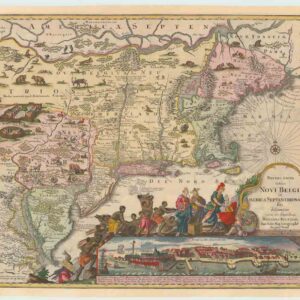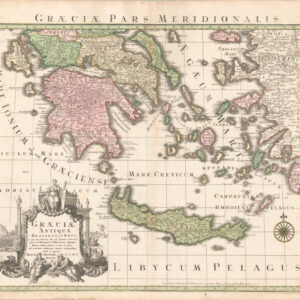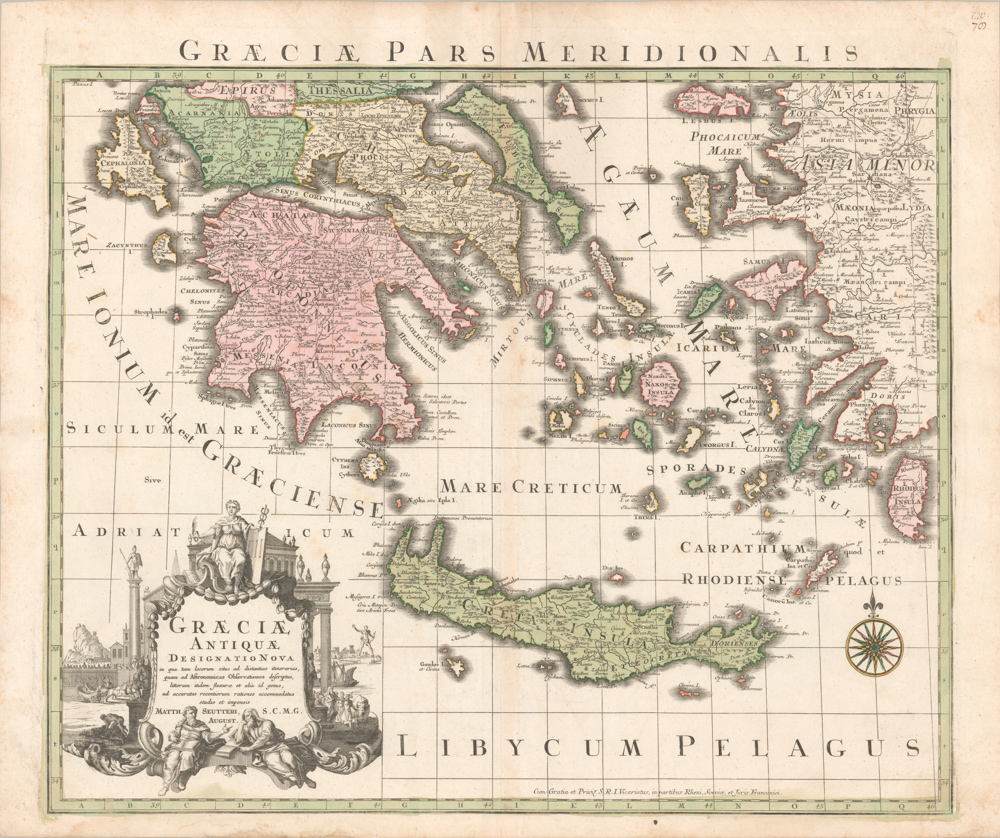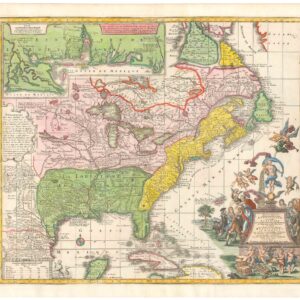Matthäus Seutter (1678-1757) was one of the most important and prolific German map publishers of the 18th century. As a young man, he was an eminent engraver who had been trained under the great Johann Baptist Homann in Nürnberg. In the mid-1720s, he moved to his hometown of Augsburg and set up his own printing and publishing house, specializing in maps. His skill as a cartographer was soon noticed in higher circles, and in 1732 Seutter was appointed Imperial Geographer to Holy Roman Emperor Charles VI. The appointment came after his most famous cartographic publication, the two-volume Atlas Novus Sive Tabulae Geographicae, from 1730.
Like many of his contemporaries, Seutter drew heavily on other mapmakers when compiling his charts. Among his primary sources were the maps of his mentor Homann and the great French cartographers Guillaume Delisle and Nicolas de Fer. When Seutter died in 1757, his son-in-law, Tobias Conrad Lotter, took over the firm.
-
-
Add to cartQuick View
- East & Midwest United States
Recens Edita totius Novi Belgii, in America Septenrionali siti, delineatio cura et sumptibus
- $4,000
- The most widely emulated map of colonial North America, with one of the earliest views of New York City.
-
Add to cart
Archived
- Out of Stock
- Europe, Greece & the Balkans
Graeciae Antiquae Designatio Nova
- Seutter’s Enlightenment-era celebration of Ancient Greece.
- Read moreQuick View
-
- Out of Stock
- East & Midwest United States
Accurata delineatio celeberrimae Regionis Ludovicianae vel Gallice Louisiane ol. Canadae et Floridae Adpellatione in Septemtrionali America Descriptae quae Hodie Nomine Fluminis Mississippi vel St. Louis
- A work of early political satire produced at the peak of Voltaire’s popularity.
- Read moreQuick View
-
- Out of Stock
- Curiosities - Miscellanea
Mappa geographiae naturalis sive tabella synoptica / inventa et adornata à Matth. Seuttero. S. Caes. Maj. geogr. Aug.
- Unusual and fascinating look at mapmaking in the 18th century
- Read moreQuick View
-






